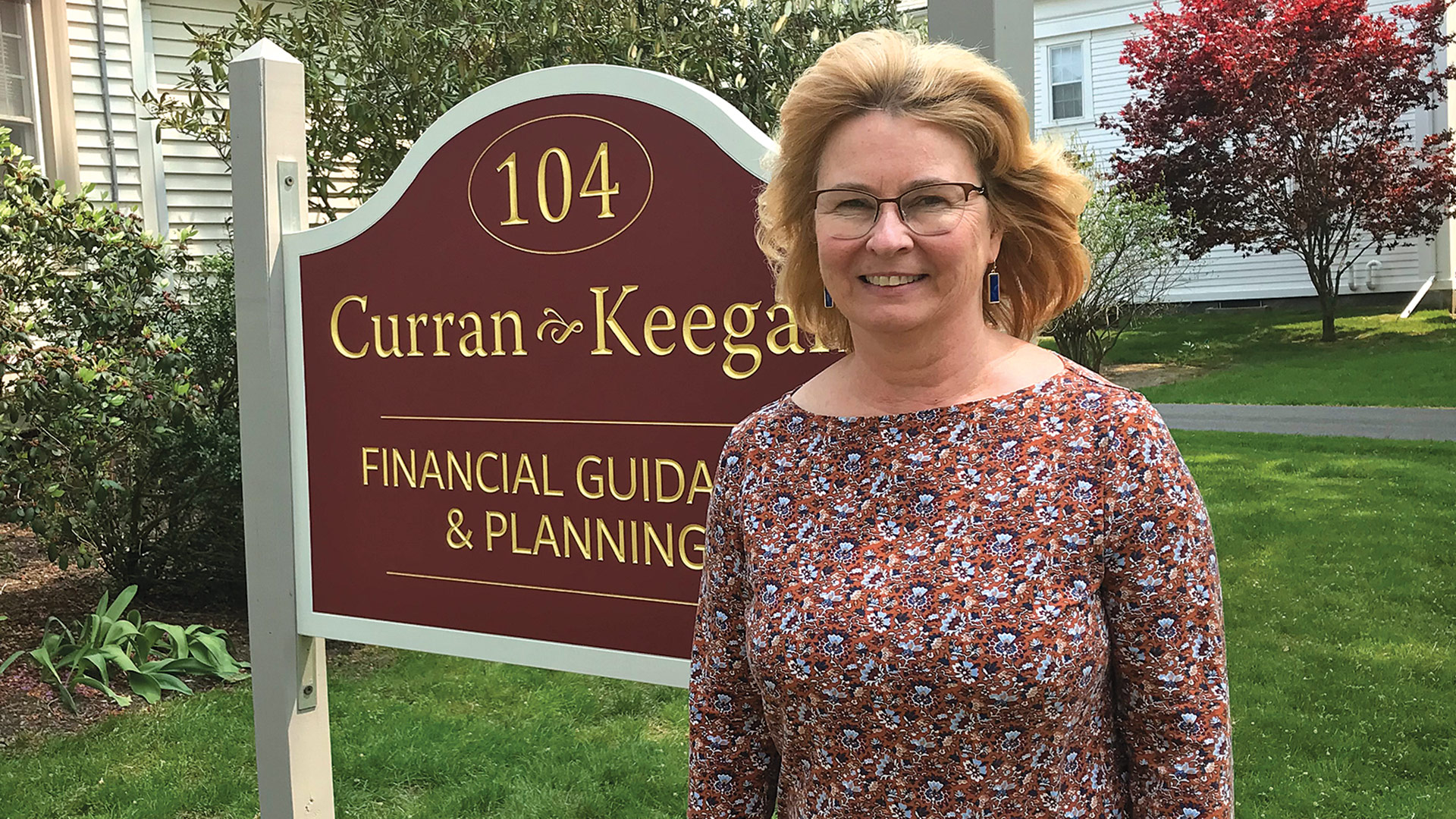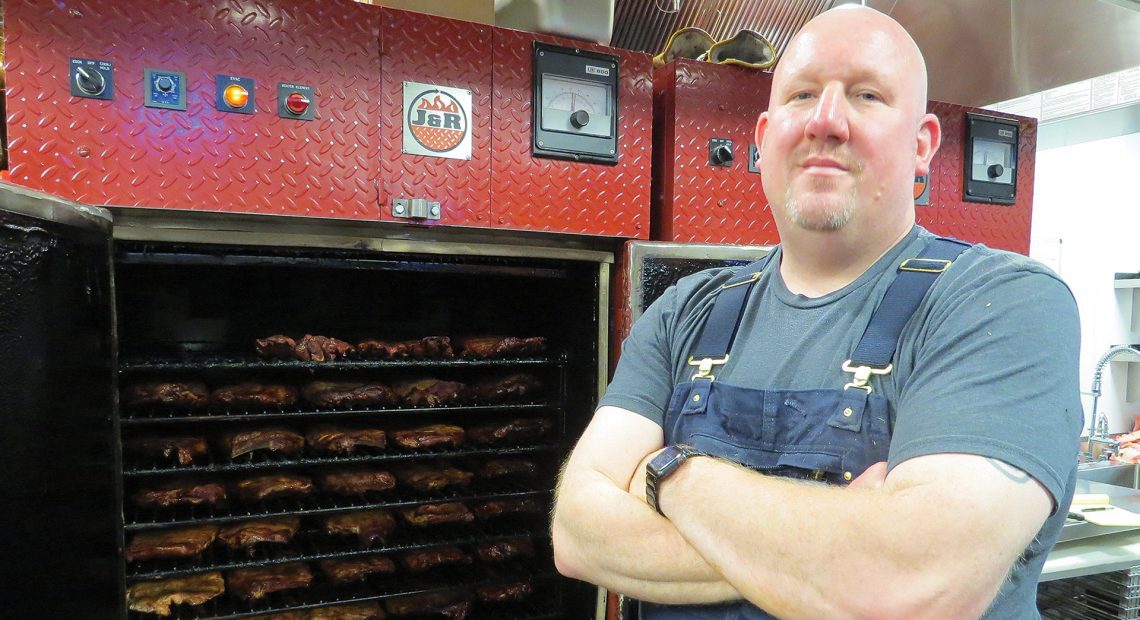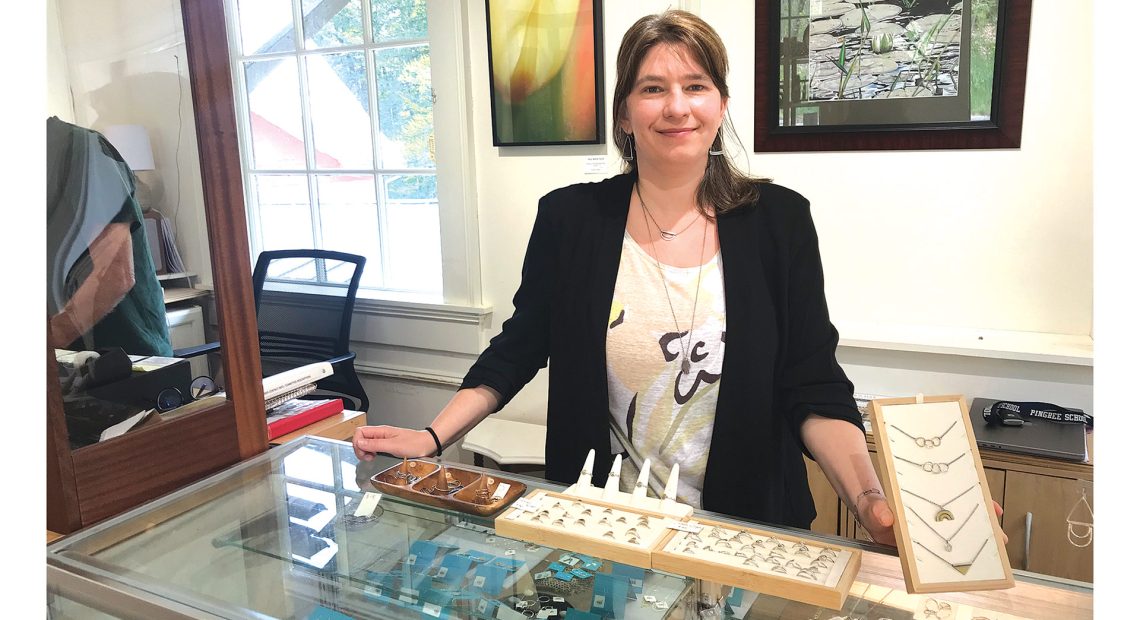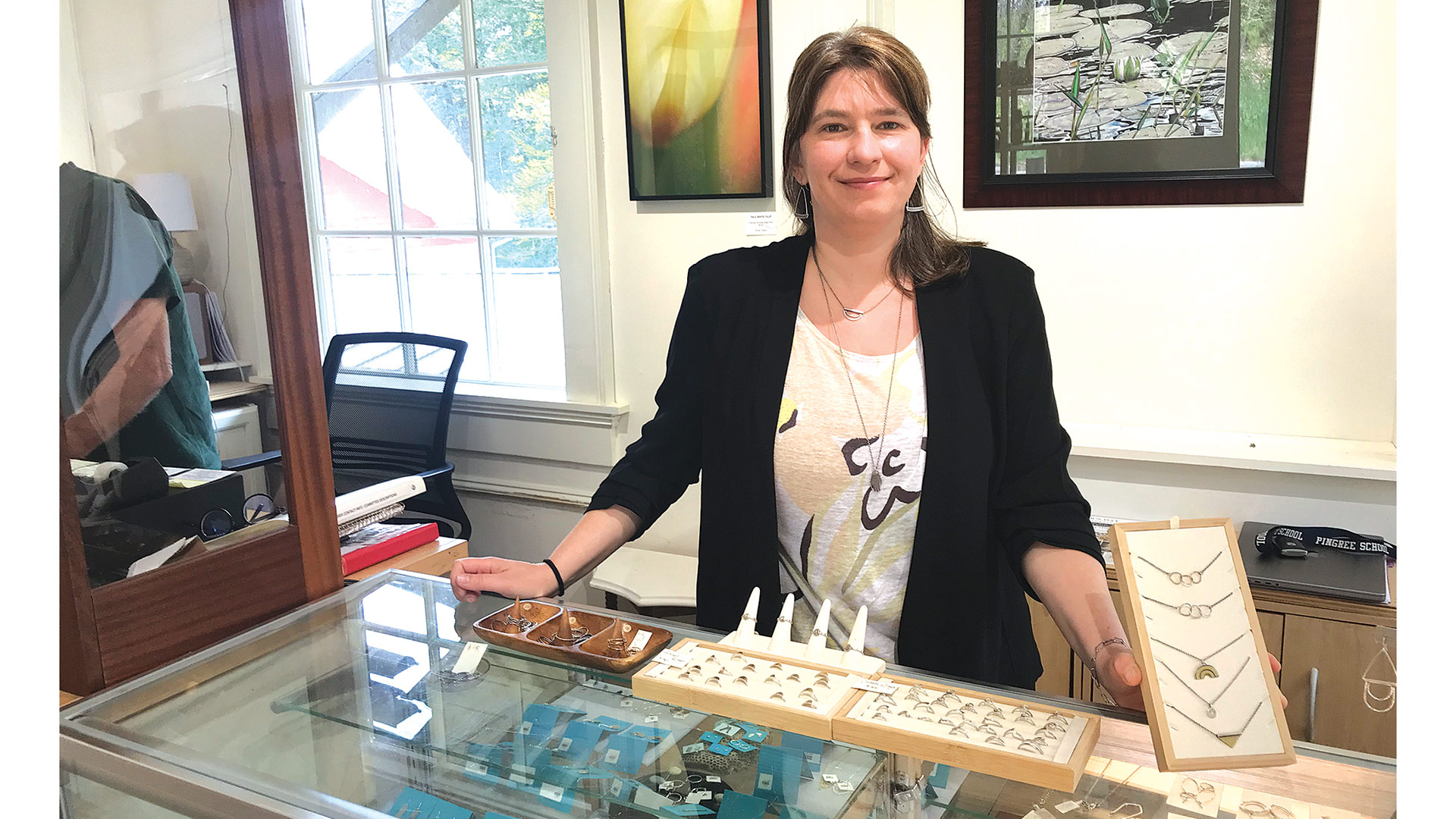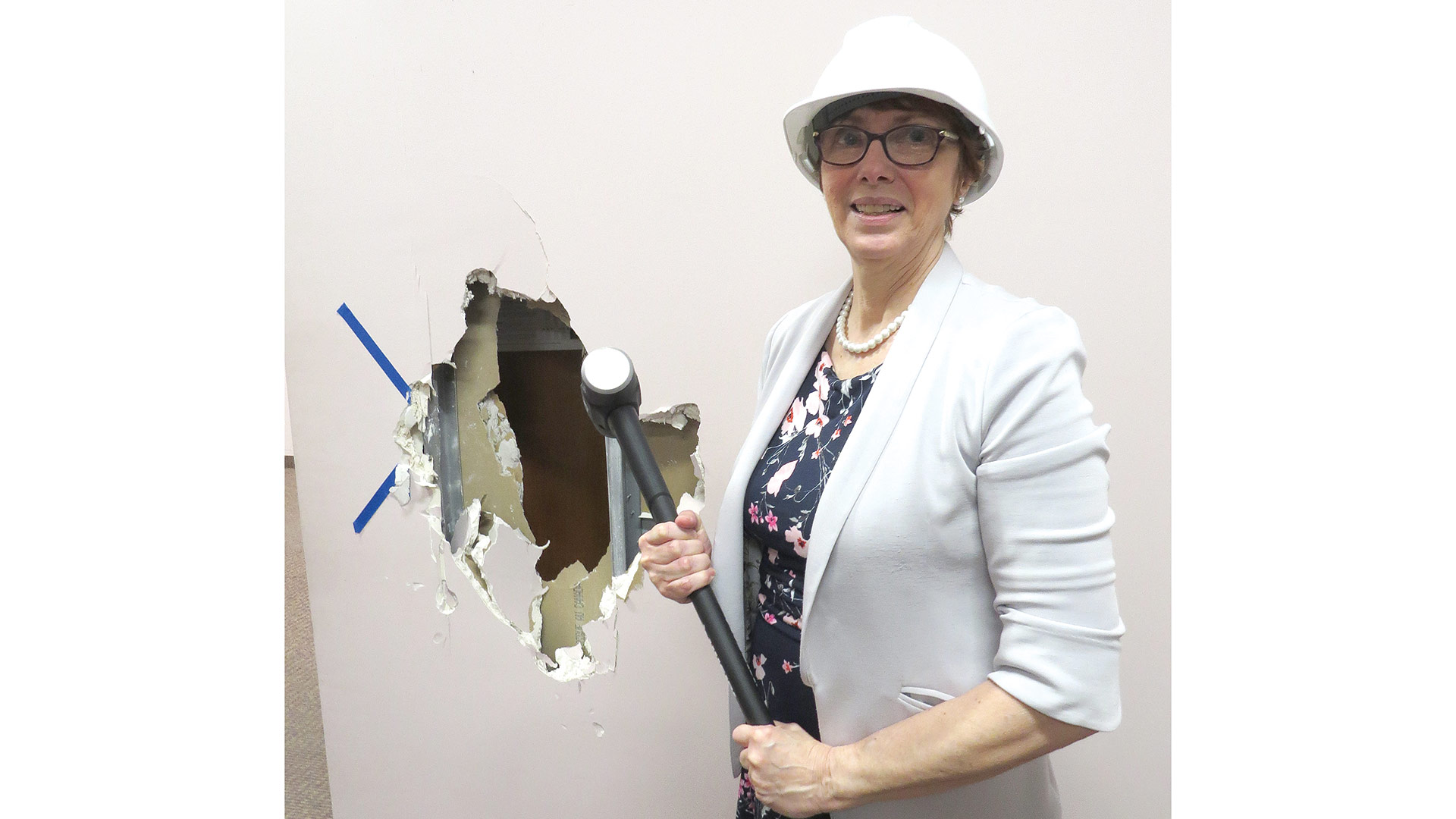Smoke Show

Bill Fletcher shows off a few dozen full racks of ribs that are still a few hours from being ready for prime time.
Staff Photo
Unlike many people in the restaurant industry, Bill Fletcher did not grow up in the business. And it was never really his dream to put his name over the door to an eatery.
Indeed, Fletcher ventured instead into the advertising industry, becoming co-owner of a firm, to be called Domani Studios, that eventually grew to 50 employees with offices in Brooklyn and Chicago.
“That was a great time … we did award-winning stuff, all digital-marketing stuff that was new to everyone at the time,” he recalled, noting that this was the start of this century. “All the major advertisers were still trying to figure out how to build a website, and Facebook was just coming into being.”
But while he was helping clients tell their stories, his — career-wise and otherwise — was starting to change, and in a big way.
“On the side, I just started really getting into barbecue,” he told BusinessWest, adding that this interest started small, on the weekends in the backyard, where he would cook for friends and neighbors. Eventually, though, it took him to competitions, mostly in the Northeast, where he would pit his ribs, chicken, pork, and brisket against friendly rivals from across the country.
“I was just obsessed with all that; I would do all this test cooking and travel around the Northeast competing,” he said, referring to the various competitions sanctioned by the Kansas City Barbecue Society. “They were all-weekend-long things, and they were a party.”
He fared well against those rivals, winning enough prize money — and accolades — to convince him to bid farewell to advertising, sell his share of the company, and use the proceeds to open Fletcher’s Brooklyn BBQ in its namesake borough of New York City.
Skipping ahead a few chapters in this intriguing story — we’ll go back and fill in the gaps later — he has opened Fletcher’s BBQ Shop & Steakhouse at the site of the former Rinaldi’s in Longmeadow. It was an almost-two-year journey from conceptualization of this enterprise to the first day of operation on April 30, and it was a difficult process, he told BusinessWest.
“We were selling out early of a lot of stuff, which is a unique and tricky thing with barbecue, because it takes forever to cook it, so whatever I had is all I had — you can’t make more.”
But just a few weeks in, he’s already seeing the fruits of his considerable labor.
The new restaurant drew large crowds opening weekend, which became a learning experience on many levels when it came to what people liked — and what he needs to cook more of moving forward.
“We’re still learning the cadence — what sells,” he explained. “We were selling out early of a lot of stuff, which is a unique and tricky thing with barbecue, because it takes forever to cook it, so whatever I had is all I had — you can’t make more.”

Bill Fletcher adds some wood to one of the barbecue pits at his new restaurant in Longmeadow, one of his many responsibilities as pitmaster.
Overall, Fletcher is off to a solid start, but, limited by staffing issues, as most all restaurants are, he is easing his way into the local restaurant, and not by choice.
Indeed, his original plan was to be open for lunch and dinner seven days a week. For now, it’s just dinner, Thursday through Monday — Mondays, because few of the area’s restaurants are open that day.
“That’s OK … it’s nice to start off slow,” he said. “We can make sure we’re doing everything right.”
For this issue and its annual Restaurant Guide, BusinessWest talked with Fletcher about the road to his new venture on Longmeadow Street and where he believes that road will take him.
Taking it Slow
As he talked with BusinessWest about his venture at one of the front tables in the bar area of the restaurant, Fletcher took a quick break to tend to the fires in the two barbecue pits in the kitchen.
As he opened the bottom door to one of them to add more wood (sugar maple and red oak), he said simply, “I’m the pitmaster — this is my job.”
“I realized that I was spending all my time thinking about barbecue and not being a good president and leader of my crew in advertising. So I spoke to my partner and said it was time for me to get out; I decided I wanted to make this my career.”
Actually, it’s just one of many, he said, as he showed off five dozen full racks of ribs that had been slow cooking for several hours and still had a few more to go before they were ready for prime time.
Fletcher said his days at the restaurant start at 5 a.m. and generally run late into the evening. During that time, he and his team are preparing and then cooking meat, getting appetizers and sides ready for the coming night, and, overall, preparing to welcome guests to what it is in many ways something new and different for the region.
This is the life Fletcher has chosen. Actually, as noted earlier, it chose him as his passion for barbecue moved from the backyard to those competitions across the Northeast to the restaurant he opened in Brooklyn.
It was while taking part in those competitions that Fletcher said he learned that barbecue wasn’t just a hobby, and it wasn’t just a business in waiting. It was, and is, as he put it, “community.”
“You go to these different competitions, and you see some new faces, but a lot of old faces,” he explained. “It’s probably anywhere between 30 and 100 teams competing, and you stay up all night. It takes forever to cook barbecue, so everyone is up all night, sleeping in shifts. It was hard work, but we had a lot of fun and collected a lot of memories.”

Bill Fletcher says it took nearly two years of feasibility studies and buildout, but his new restaurant is now a reality.
Staff Photo
Making a long story somewhat shorter, Fletcher said he started spending more and more of his time at these competitions, to the detriment of his ad agency.
“I realized that I was spending all my time thinking about barbecue and not being a good president and leader of my crew in advertising,” he explained. “So I spoke to my partner and said it was time for me to get out; I decided I wanted to make this my career.”
He took the proceeds of his buyout and opened Fletcher’s Brooklyn BBQ in the Gowanus neighborhood of the borough in 2012.
Actually, he was part of a wave of barbecue to hit Brooklyn — three new restaurants opening at roughly the same time — a movement that put his restaurant in the food section of the New York Times within weeks of opening.
“We all opened up within a month of each other,” he recalled. “Pete Wells, the New York Times restaurant critic, wrote a piece about us, saying ‘big league barbecue hits New York City,’ and reviewed us all. That was exciting, to be in the New York Times restaurant review in your first month of being open. That was unexpected, and he had some kind things to say about us; that was fun.
“And we won all kinds of awards there — it was a really great run. I was there for a decade … so many great people and great food,” he went on, adding that one key to the restaurant’s success was its operating model, whereby it served as a hub (he called it the ‘hive’), supplying barbecue to other pop-up or market locations.
“We would cook everything in one central location and then send it out to a number of satellites,” he explained, adding that the model worked well, especially in that metropolitan area. “You’re not building five restaurants; you essentially have a commissary, and you’re just sending food out. It was a great model for us.”
Meaty Issues
Eventually, though, Fletcher closed the location. First, he decided he had enough of Gotham and moved upstate. He kept the restaurant going, managing from afar. He then “started dating,” as he put it, and upon “not finding anyone in Upstate New York to my liking,” expanded the search to 100 miles (far for a dating app), which included Longmeadow, where he found what — and who — he was looking for.
“I met my future wife through Tinder,” he explained, gesturing with his hand to indicate that she lived just a few minutes from where he was sitting. When the relationship reached a degree of seriousness, he started looking at where he could open a restaurant in the area.
And after some hard searching and then some “feasibility studies,” as he called them, he eventually settled on the location of the old Rinaldi’s.
“When I walked in here, this place was completely gutted,” he said, adding that a restaurant was planning to move into the site, but those aspirations were derailed by COVID. “I’m completely independent — I don’t have any backing, so I was really concerned about the dollars going into it and whether I could actually pull it off.”
Eventually, the numbers worked, even if the project went 25% over budget, by his estimate, and the restaurant opened more than two years after the first negotiations on a lease began.
Before the opening, Fletcher handled a few pop-up events, including the town’s annual Fall Festival, that provided a taste of what he was getting into — literally and figuratively — as well as some encouraging signs.
“The community was so supportive,” he recalled. “I was selling out in two hours, when it’s supposed to last six. Those events were really encouraging, and I was super excited to be part of all that.”
As noted earlier, Fletcher said he’s still learning what people like most — the ‘cadence,’ as he called it. There’s a note on the restaurant’s website that states hours and then a notation: “please come early, we sell out daily.”
“Trying to figure out what the demand is going to be is part of the trick,” he explained. “And that will take us a little bit of time to figure it all out.”
The menu includes the staples of barbecue — beef brisket, pork (pulled pork and hot links), spare ribs, and chicken, as well as platters with two or three different meats — but also steaks (New York strip, ribeye, and filet mignon) and other choices such as catfish and grits, barbecue ramen, Cajun pasta, pulled pork sandwich, and brisket cheesesteak. Bar snacks and starters include barbecue wings, barbecue nachos, barbecue fries (the menu describes them as a “cult favorite”), hot links with pimento cheese, and spicy shrimp hush puppies.
As for those steaks, Fletcher says they’re unlike anything he believes is offered in the region.
“We’re cold-smoking them 10 to 15 minutes,” he explained. “So they come out raw — they’re just taking in some of our smoke flavor. And then, we’re searing them to order. It is a really complex flavor; it’s really unique. It might not be everyone’s liking, it’s a little smoky, but I think it’s outstanding.
“We’re a little weird,” he went on. “It’s kind of a fancy place — marble tabletops and brass everything — but you can get some sticky ribs and nachos next to a filet mignon and a glass of champagne.”
Looking ahead, Fletcher said he will continue the process of easing his way toward that schedule he originally put on the drawing board.
That means eventually adding lunch, maybe another night or two of dinner, takeout, and catering. He said he will not take the Fletcher’s act to the Big E this year, but will explore making that part of the equation moving forward.
For now, he’s settling in while also keeping the fires stoked — he’s going through two cords of wood a month.
As he noted, barbecue isn’t just food, it’s community, and that’s what he’s bringing to Longmeadow — and the region.




